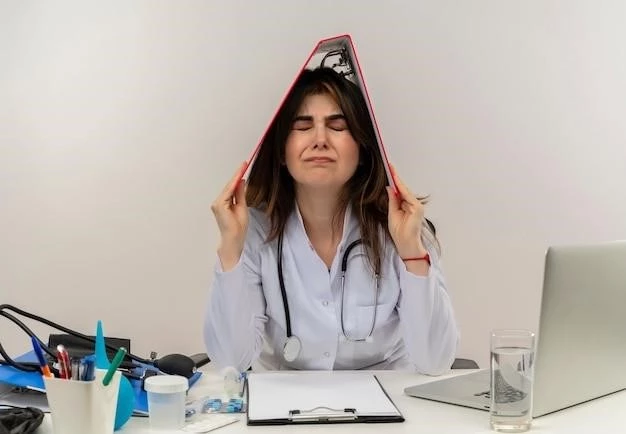Overview of Cleidocranial Dysplasia
The overview of Cleidocranial Dysplasia provides
an insight into the causes, symptoms, treatment options,
challenges faced when living with the condition, its
impact on dental health, ongoing research, and available
support and resources․
Description of Cleidocranial Dysplasia
Cleidocranial Dysplasia is a rare genetic disorder characterized by delayed closure of the skull bones, a missing or underdeveloped collarbone, dental abnormalities, and short stature․ This condition affects the development of bones and teeth, leading to various physical and dental symptoms․
Types of Cleidocranial Dysplasia
In general, there are no distinct types of Cleidocranial Dysplasia; however, variations in the severity and specific symptoms may occur among affected individuals․ The condition is typically associated with mutations in the RUNX2 gene, but the presentation can vary from person to person․
Causes of Cleidocranial Dysplasia
The primary cause of this condition is genetic mutations․
Genetic Mutations
Cleidocranial Dysplasia is primarily caused by mutations in the RUNX2 gene․ These mutations affect the development of bones and teeth, leading to the characteristic features of the condition․ Understanding these genetic changes is crucial for diagnosis and management․
Environmental Factors
While genetic mutations are the primary cause, environmental factors may influence the severity of Cleidocranial Dysplasia symptoms․ Factors like nutrition, exposure to toxins, and overall health may play a role in how the condition manifests in affected individuals․
Symptoms of Cleidocranial Dysplasia
Characterized by specific physical and dental features․
Physical Symptoms
The physical symptoms of Cleidocranial Dysplasia include delayed closure of skull sutures, hypoplastic or absent collarbones, short stature, dental abnormalities, and skeletal issues like scoliosis․ These features are key in diagnosing the condition and understanding its impact on the body․
Other Symptoms
In addition to physical manifestations, individuals with Cleidocranial Dysplasia may experience hearing loss, recurrent infections, and speech delays․ These symptoms can vary in severity and may require specialized care to address the diverse challenges associated with this genetic condition․
Treatment options for Cleidocranial Dysplasia
Focus on medical interventions and therapeutic approaches․
Medical Interventions
Medical interventions for Cleidocranial Dysplasia focus on managing symptoms like skeletal abnormalities and dental issues․ Surgical procedures may be necessary to correct bone deformities, while ongoing monitoring and care from healthcare professionals are essential to address the diverse needs of individuals affected by this condition․
Therapeutic Approaches
Therapeutic approaches for Cleidocranial Dysplasia encompass physical therapy, speech therapy, and specialized dental care to address the unique needs of individuals with this condition․ These therapies aim to improve quality of life, enhance mobility, and support proper development, fostering overall well-being in affected individuals․
Living with Cleidocranial Dysplasia
Addressing challenges and fostering supportive networks․
Challenges and Coping Strategies
Living with Cleidocranial Dysplasia presents challenges like skeletal issues and dental problems․ Coping strategies involve regular medical care, adapting activities to individual needs, seeking emotional support, and maintaining a positive outlook to navigate the unique challenges associated with this genetic condition․
Supportive Networks
Supportive networks play a crucial role in providing emotional support, sharing experiences, and connecting individuals with Cleidocranial Dysplasia to others facing similar challenges․ Support groups, online communities, and patient organizations offer valuable resources and a sense of community for those affected by this rare genetic disorder․
Cleidocranial Dysplasia and Dental Health
Exploring dental complications and treatment approaches․
Dental Complications
Cleidocranial Dysplasia can cause delayed eruption of permanent teeth, supernumerary teeth, and other dental issues․ These complications may require orthodontic treatment, tooth extractions, and specialized dental care to address the unique challenges associated with this rare genetic disorder․
Treatment Approaches
Treatment for Cleidocranial Dysplasia related dental issues may include orthodontic interventions, dental restorations, tooth extractions, and ongoing dental monitoring․ Collaboration between dental specialists and healthcare providers is crucial to create personalized treatment plans to manage the unique dental challenges associated with this rare genetic condition․
Cleidocranial Dysplasia Research Updates
Current studies and future directions in research․
Current Studies and Findings
Ongoing research into Cleidocranial Dysplasia focuses on understanding genetic mechanisms, improving dental treatments, and enhancing quality of life for affected individuals․ Recent findings highlight potential therapeutic targets and interdisciplinary approaches for better management of this rare genetic condition․
Future Directions
Future research on Cleidocranial Dysplasia aims to further unravel the genetic pathways underlying the condition, develop innovative treatments for skeletal abnormalities and dental issues, and enhance overall outcomes for individuals living with this rare genetic disorder․ Collaborative efforts in research hold promise for advancing knowledge and improving care for affected individuals in the years to come․

Support and Resources for Cleidocranial Dysplasia
Patient organizations and educational materials․
Patient Organizations
Various patient organizations provide support, resources, and advocacy for individuals and families affected by Cleidocranial Dysplasia․ These organizations offer a platform for sharing experiences, accessing information, and connecting with a community of individuals facing similar challenges related to this rare genetic disorder․
Educational Materials
Educational materials on Cleidocranial Dysplasia offer valuable information on the condition, its management, and available resources․ These materials aim to empower individuals, caregivers, and healthcare professionals with knowledge to better understand and navigate the complexities of this rare genetic disorder․
